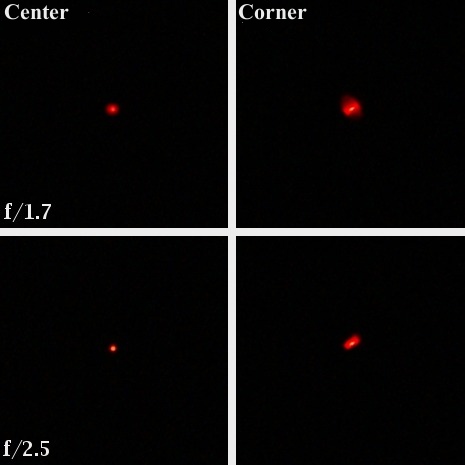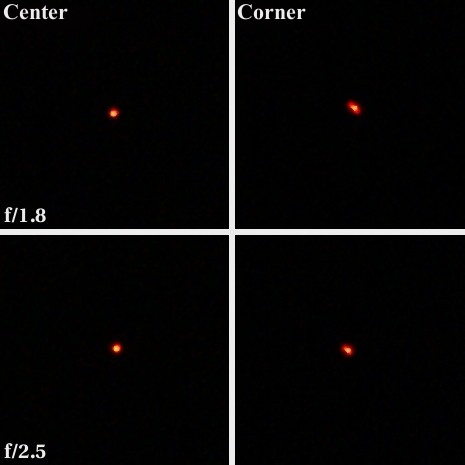A history of Sony Alpha - Minolta AF 50 mm f/1.7 versus Sony DT 50 mm f/1.8 SAM
7. Coma and astigmatism
Please Support UsIf you enjoy our reviews and articles, and you want us to continue our work please, support our website by donating through PayPal. The funds are going to be used for paying our editorial team, renting servers, and equipping our testing studio; only that way we will be able to continue providing you interesting content for free. |
- - - - - - - - - - - - - - - - - - - - - - - - - - - - - - - - - - - - - - - - - - - - - - - -
When we compare the picture crops of a diode, which was placed in the frame centre and then in its corner, we see that the older Minolta’s construction fares much worse when it comes to the coma correction. This aberration is a serious reason why the picture quality is worse at the edge of the frame even on a small A100 sensor. The Sony 1.8/50 copes a lot better here and that’s why it gets better results at the frame edge.
| Minolta AF 50 mm f/1.7 |

|
| Sony DT 50 mm f/1.8 SAM |

|
The Sony DT 50 mm f/1.8 SAM had astigmatism level reaching 13%. It’s a medium result but we suspect it will be getting worse in the future because of the plastic housing. In the case of the Minolta, despite 20 years or wear and tear, the astigmatism reaches 5% which is a really good result.






